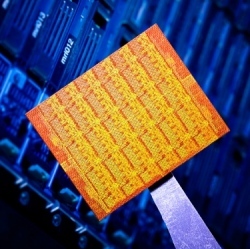
The writing is on the wall for the silicon chip. Transistors have been shrinking for the last half a century but they cannot get smaller forever. Most industry pundits think that the downscaling of silicon chip technology cannot extend much beyond 2026. The big question, of course, is what will replace it.
One possibility is graphene, which various teams around the world have used to make hugely fast transistors. Last year, one team clocked a graphene transistor at a cool 427 GHz. So you could be forgiven for thinking that graphene is the perfect silicon replacement.
Not so fast. There is a significant problem with graphene that makes it difficult to use in transistors– it has no band gap.
That means there is no energy range in graphene in which electron states cannot exist. Or in other words, it’s impossible to switch off graphene. And for a transistor, that spells serious trouble.
Today, Guanxiong Liu and pals at University of California, Riverside, say they’ve found a way round this that allows graphene transistors with no band gap to work in an entirely different way to conventional switches. “The obtained results present a conceptual change in graphene research and indicate an alternative route for graphene’s applications in information processing,” they say.
Every solid material has its own characteristic bands of energy in which electrons can flow to form a conductor or are prevented from flowing to form an insulator. In a semiconductor, electrons cannot flow at low energy and so the material behaves as an insulator. However, a relatively small amount of energy can push electrons into the so-called conduction band where they flow freely forming a conductor.
The energy difference between these insulating and conducting states is the band gap and the ability to switch between one state and the other is the defining characteristic of transistor.
The problem with graphene is that it has no band gap; electrons can flow at any energy. So the major focus of graphene engineers has been to find ways of creating an artificial band gap using methods such as applying electric fields, doping with atoms or by stretching and squeezing the material.
These approaches have met with modest success. Practical digital circuits require a band gap on the order of 1 eV at room temperature. But the best efforts with graphene have produced modest band gap is the few hundred meV.
Even then this has come at a serious cost. The best graphene transistors are hugely fast but they dissipate energy like there’s no tomorrow and leak current like water through a sieve.
